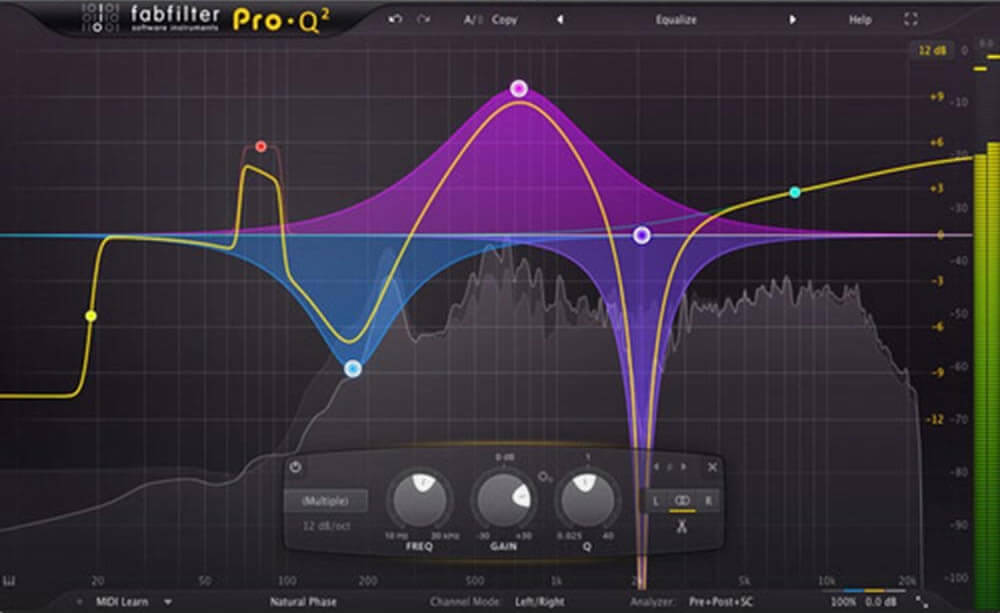

- #FABFILTER PRO Q 3 SPECIALS UPDATE#
- #FABFILTER PRO Q 3 SPECIALS MANUAL#
- #FABFILTER PRO Q 3 SPECIALS UPGRADE#
- #FABFILTER PRO Q 3 SPECIALS FULL#
- #FABFILTER PRO Q 3 SPECIALS KEYGEN#

#FABFILTER PRO Q 3 SPECIALS FULL#
#FABFILTER PRO Q 3 SPECIALS KEYGEN#
3.Run our keygen on Windows, then choose a product and generate a license. 5.Enjoy OSX 1.Uninstall previous versions. The following features are new or improved: 3.Choose a product and generate a license.
#FABFILTER PRO Q 3 SPECIALS UPGRADE#
This upgrade brings FabFilter TImeless 3 in line with the dark design aesthetic that FabFilter has now adopted for all its more recently updated plugins, such as Pro Q 3 and Pro R.
#FABFILTER PRO Q 3 SPECIALS UPDATE#
After the release of a teaser video a few days ago, the update of their delay plugin to Timeless 3 was released today. I do however have the VST3 verison of Fabfilter Pro Q 2 installed on the laptop. Oh, and it'll even open your presets from Pro‑Q and Pro‑Q 2.FabFilter didn't let us wait long. Finally, Pro‑Q 3 now works in all major surround formats, and a drop-down menu for each band allows you to specify exactly which channels that band should affect - in stereo, the choices are left, right, Mid, Sides or both channels.

Other new features include a 'brick wall' filter slope and the neat 'flat tilt' shape, which simply rotates the entire frequency spectrum about a fixed point, applying more and more boost or cut the further you get from that point. This makes it so much easier to set up EQ matching, and also enables a new feature called Show Collisions, which warns you when two sources might be fighting for the same bit of spectral real estate. Selecting one will display the signal it's seeing overlaid with that of the open instance. In the pop-up control panel for the spectrum analyser, you'll see a list of all the other instances in your project. Previously, functions such as EQ matching relied on the user setting up side-chain routing, but now, instances of Pro‑Q can communicate directly. There have also been further improvements to the analysis features. Both plug-ins handle straightforward duties such as taming proximity effect on a close-miked vocal with aplomb for more advanced work, and especially for controlling the tonality of complex signals such as a full mix, it is definitely worth investing in Pro‑MB too! What you do get here that isn't on offer in Pro‑MB is the ability to create very narrow dynamic bands, allowing you to dynamically dip out resonances, feedback whines and so on. In use, though, this really isn't an issue, because the automated settings respond very intelligently to any input signal you throw at them, and you can easily set a limit to the amount of gain boost or attenuation that gets applied the 'direction' of the dynamic action is also easily controllable, so you can have a boost that attenuates dynamically or vice versa.
#FABFILTER PRO Q 3 SPECIALS MANUAL#
Attack, release and ratio are fully automatic, as is the threshold by default, though this can be switched to manual control.

What you don't get in Pro‑Q 3's dynamic bands is much control over the actual dynamics parameters. And FabFilter fans won't be surprised to learn that they have indeed found a way to do this. FabFilter fans will, of course, be well aware that the company already make the superb Pro‑MB, which provides versatile frequency-dependent dynamics processing, so the question on many lips was how they would manage to introduce this into Pro‑Q without either duplicating Pro‑MB functionality or creating a pale imitation of it. Launched late in 2018, the third major update to Pro‑Q is likewise packed with functionality, and the headline feature this time around is dynamic equalisation. The v2 update in 2014 added a swathe of new capabilities the one I use all the time is the 'tilt shelf' curve, which is perfect for transparently rebalancing the tonality of a source or a mix, while other v2 highlights included 'match' EQ, a freely resizable window and greatly improved analysis features. The Pro‑Q user interface has been widely imitated since its debut in 2011, but FabFilter haven't stood still. It sounds good, it's amazingly flexible, and best of all, its graphical interface makes it a joy to use. I'm not sure if there is such a thing as a desert island EQ plug-in, but if I was stranded on a Pacific atoll with only one tool to tackle problematic audio files, FabFilter's Pro‑Q would be that tool.


 0 kommentar(er)
0 kommentar(er)
